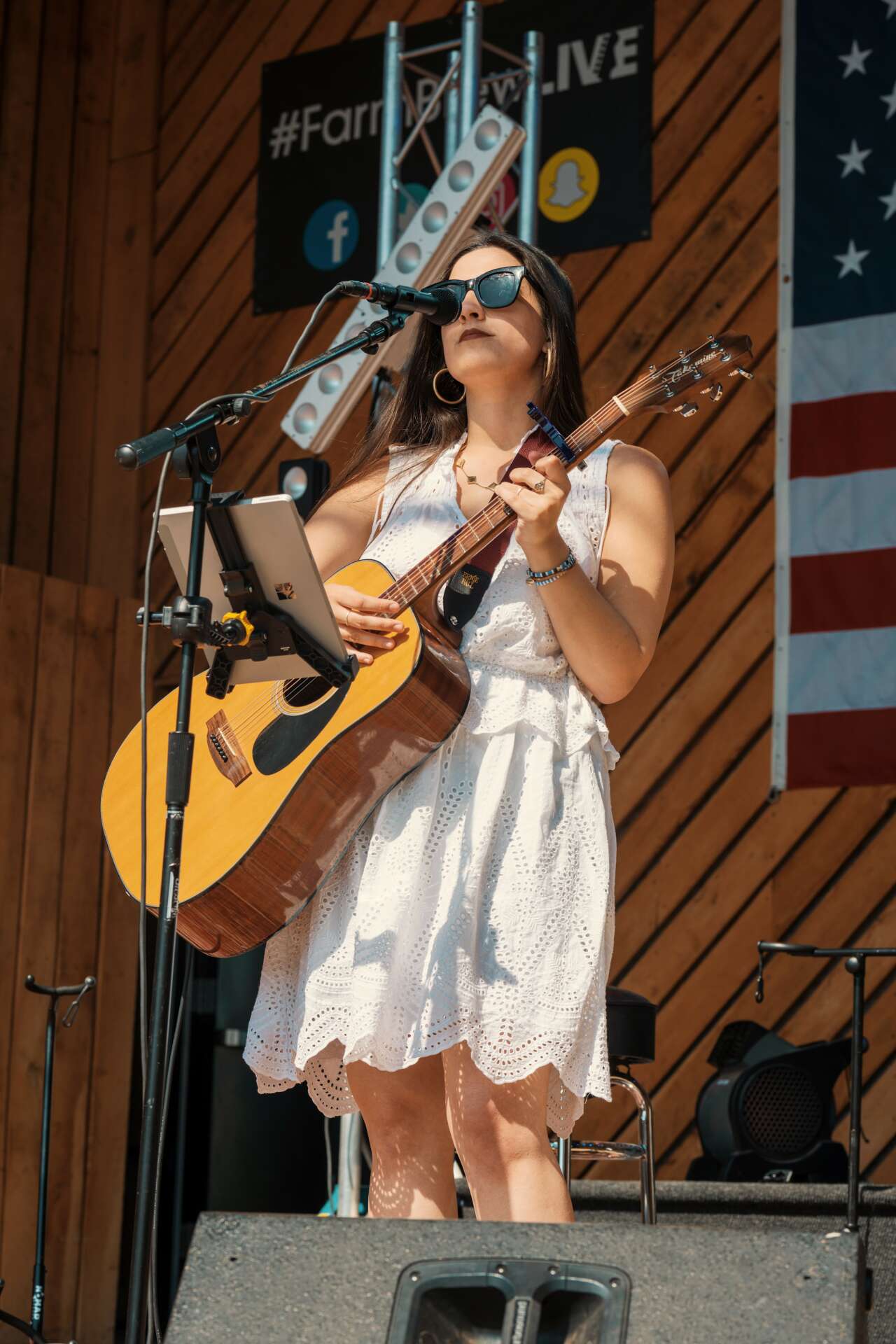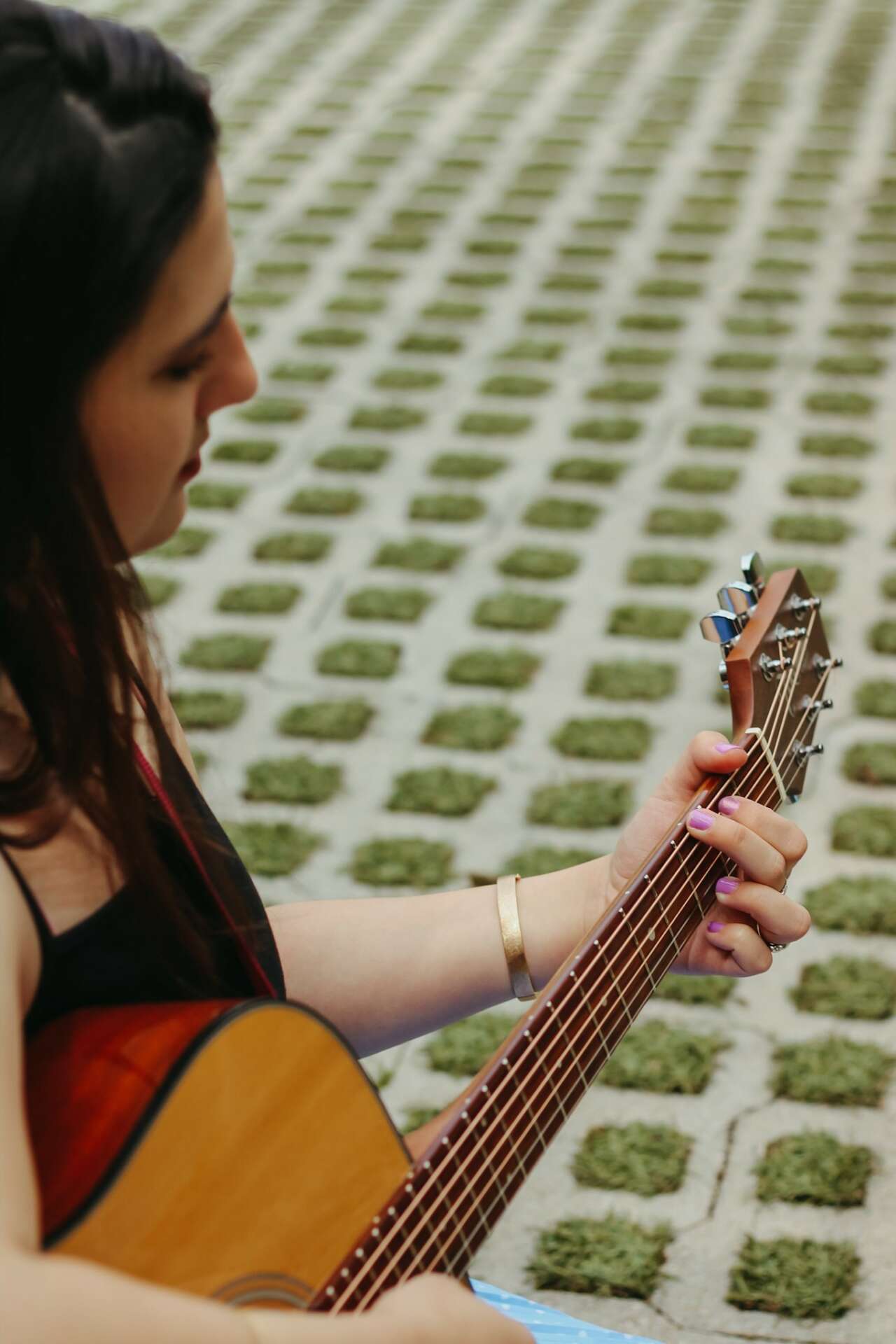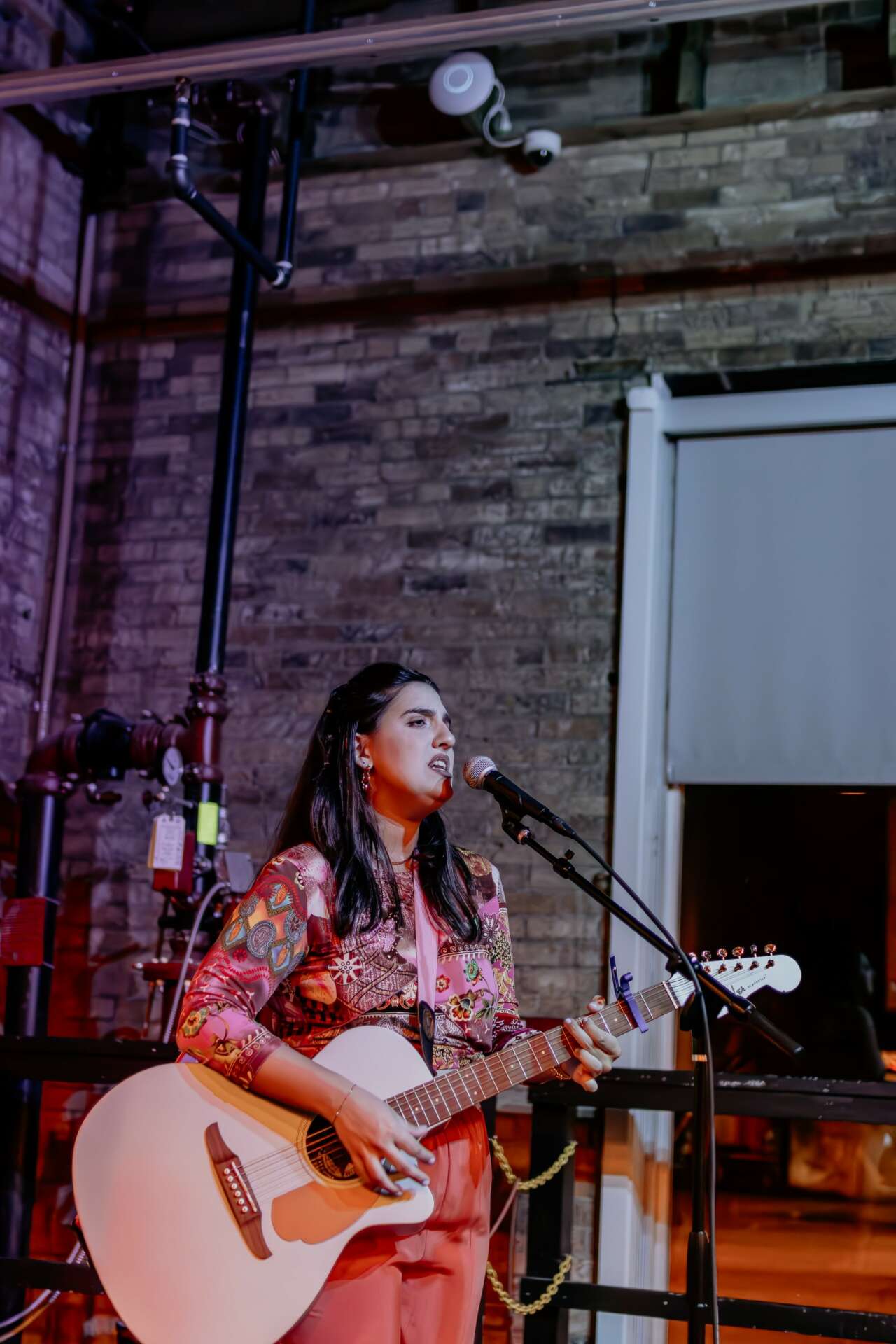We recently connected with Hannah Rose and have shared our conversation below.
Hi Hannah, thanks for joining us today. Have you been able to earn a full-time living from your creative work? If so, can you walk us through your journey and how you made it happen? Was it like that from day one? If not, what were some of the major steps and milestones and do you think you could have sped up the process somehow knowing what you know now?
At the beginning of 2020 – just before the pandemic started – I was laid off from my job in Tyler, TX. I was just out of college working at our local World Market and had plans to move to San Francisco to work for the home office. At this same time, I had just booked my very first gig performing live music at one of the bigger venues in town. When covid began to ramp up in Texas I thought to myself “this isn’t the time to be re-entering the workforce.” A lot of bars and restaurants were still operating at a slightly slower pace than before. I was able to perform once, sometimes twice every month. When I told that to some of my creative counterparts, they were shocked saying they were struggling to be booked at all. I think businesses were opting for solo acts over bands to give them some feeling that they were following social distancing recommendations. By the end of 2020, I had developed strong relationships with venue owners and bookers. Halfway through 2021, as things had begun to return to some kind of normalcy, I realized I was nearly working full time playing music. In October of 2021, I took leap of faith (faith in myself and the industry) and moved to Dallas, to further my career. At the beginning of 2020 I was struggling to grapple with the fact that music was going to be my part-time hobby while I worked in corporate marketing. I was fearful that I would be too focused on a new job in a new city, and that my art would fall completely by the wayside. I hadn’t let myself fully imagine a life where being a creative would pay my bills. All of the circumstances and outside forces aligned perfectly for me to not only pursue this lifestyle, but thrive in it.


As always, we appreciate you sharing your insights and we’ve got a few more questions for you, but before we get to all of that can you take a minute to introduce yourself and give our readers some of your background and context?
I am a self-taught guitarist and songwriter. Growing up, I had always written poems and in the back of my mind I could hear a special cadence or corresponding melody. As I got a little older, my dad loaned me his guitar and book of chord charts to teach myself. I tried and failed to learn maybe 5 separate times before deciding to quit for a couple years. It was at the beginning of high school when I thought “it’s now or never.” Once I had really committed myself to learning, I couldn’t stop practicing. I would stay up late at night working on the new chord progressions. My bedroom door was directly across the hall from my parents. Most nights, my dad would come in my room around 11 pm and utter the same phrase “Han, come on we’re trying to go to sleep.” My secret to late night playing was to lose the guitar pick entirely and just play softly with my thumb and finger pads. The style was born out of necessity so I could practice late into the night, but ultimately it is the way I most like to interact with the guitar now. I love the velvety sound the guitar makes with just finger pads, and the way it echoes my soft singing voice. Now as a full-time performer, I love bringing this kind of gentler sound to a room. Often, people will approach me after shows to say they enjoyed the music. The most common (and my favorite) compliment is that the music was so “peaceful.” I think if I can invite peace or introspection into someone’s day, then I have accomplished my goal. For a long time my original music has felt like pages out of diary, and I used to feel strange sharing these intimate parts of myself with strangers. As my work and writing has evolved, it feels more like sharing a letter. We all enter the venue as strangers, but we leave connected. I believe that is true pride of an artist – to change the nature of a moment by sharing with an open heart. The connection between musician and listener may be brief at times, but every encounter changes us just a little bit. I take the greatest pride in being able to change and be changed by others through the exchange of music.



Do you think there is something that non-creatives might struggle to understand about your journey as a creative? Maybe you can shed some light?
A lot of times, my non-creative friends (or even listeners at a venue) will comment that it’s so cool that I am “living my dream” or talk about how exciting my life must be. What I think a lot of people don’t realize is how difficult it is to balance the business with the art. It is a challenge not to let your art and creativity feel like a chore – “work.” People say “if you love what you do, you’ll never work a day in your life,” but the reality is that after a point everything can begin to feel like work. In addition to the struggle of balancing the business and creative sides, being an artist can be emotionally exhausting. As we share our art we share a little piece of ourselves. I think many non-creatives don’t understand or realize the emotional output involved in creating and sharing art.
Creatives often find a home and peace in their art. As art becomes a livelihood, the nature of the relationship can shift from passion projects to a necessity to live. Not in a way that “I can’t live without my art,” but rather “I cannot pay my bills, put food on my table, or gas in my tank without my art.” Most non-creatives can try not to bring work home, but for the creative it is always on the mind. There is an additional struggle that emerges – “am I creating this art because I feel creative, or because it is my job? Is this my best work or is this just work?”
I think it’s natural that all creatives discover this dilemma at one point or another in their career. I think the best way to combat this is to feed yourself. We all have things that make us feel at peace, at home, ourselves, and alive. Identifying these rituals or physical objects that ground us and embracing them is, in my opinion, the best way to allow art to flourish for the sole sake of creativity.
How can we best help foster a strong, supportive environment for artists and creatives?
I think the best way to support artists and creatives is to physically show up. I know that creatives appreciate the Instagram likes, kind Tik Tok comments, and YouTube subscribers – sometimes due to distance or accessibility restraints, that is all we can do to show support. Physically showing up to music shows or gallery openings contributes to a creative ecosystem in a major way. Creatives are able to emotionally feed their audience with their art.
Art that is created and exists in the physical realm has a purpose to be seen or heard. Creatives love to share glimpses of these works digitally, and it is thrilling to connect with an audience that is greater than our physical radius. However, there is a special kind of connection and fulfilment that comes from physically viewing or hearing art – both for the creative and the individuals who come to absorb it. In order for a creative ecosystem to thrive we must be present – artists and members of society alike.
Contact Info:
- Website: https://hannahrosemusic.us/
- Instagram: https://www.instagram.com/music.hannahrose
- Facebook: https://www.facebook.com/music.hrose/


